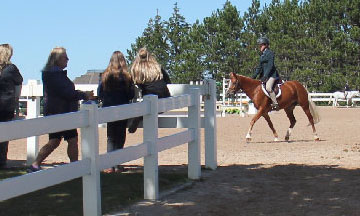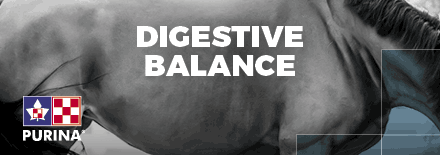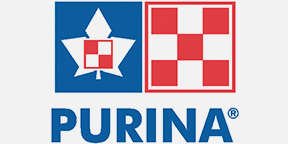By: Kalina Rutledge, BBRM Equine, Marc-Andre Blouin, B.Sc.
Winter is not showing any signs of backing off and these frigid temperatures tend to make people want to give their horses a little something extra in their feed as a warm, cozy treat.
The traditional warm winter feed for horses is a bran mash. Often people will mix wheat bran with boiling water and any other yummy treats like chopped apples or carrots and molasses to make a tasty mash for these chilly mornings. The tradition of feeding a bran mash dates back to before our grandparent’s time and, as with any trend, there are reasons behind it. Let’s take a look at these reasons and learn how times have changed, resources have evolved and how today we can improve on the concept of a bran mash to make it even better for your horse.
There are three main reasons why people are drawn to the idea of feeding a bran mash; palatability, fibre source and colic prevention. Palatability relates to our desire, as horse owners, to spoil our horses. Adding carrots and molasses to bran makes us feel good about ourselves to be able to give our horses a yummy meal that they enjoy. Look at it realistically though, wheat bran is not appetizing to your horse, adding yummy treats is the equivalent of you covering your cream of wheat with brown sugar as a child just to make it edible.
This leads into the next reason for feeding wheat bran, the belief that it is high in fibre and therefore healthy for your horse, who requires a high fibre diet. The truth is that beet pulp or soy hulls are a much better source of fibre hence why they are used as horse feed ingredients in commercial feeds.
The third reason for feeding bran is the belief that it has a laxative effect for horses and can therefore prevent impaction colic. This is a myth. The softer stool usually seen after eating a bran mash is instead due to digestive system upset triggered by the sudden change in diet.
Aside from these misconceptions, a dangerous aspect of bran is its calcium:phosphorus ratio. Calcium and phosphorus work together in the horse’s body and therefore need to be absorbed together in the proper ratio. This ratio is ideally 2 parts calcium to 1 part phosphorus for a maintenance horse. If intake of phosphorus exceeds calcium then the body will pull calcium from the horse’s bones in order to correct the ratio, resulting in weakened bones. Bran has a ratio of approximately 10 times more phosphorus than calcium. If fed often enough and in sufficient amount, a bran mash could lead to skeletal problems such as “big head.”
There is no doubt that a steamy, warm bucket of feed is comforting for your horse on a cold day and wet feed is a great way to get more water into your horse. However, technology has come a long way since bran mashes were invented so let’s improve on the bran mash concept since the theory behind it is good.
Any feed with a fibre level of at least 15% will turn into a lovely mash when warm water is added. Add 2 to 3 parts warm water, depending on the feed, to one part feed about 10 minutes before you plan to give it to your horse and by the time you are ready it will be puffed up with moisture, steamy and warm. Add an ounce of loose salt to promote drinking and go ahead and add your carrots or apples and molasses to make it yummy for your horse and make you feel good.
Now you are meeting all the original reasons for feeding a bran mash without any of the disadvantages or misconceptions. This mash will be palatable, high in fibre and healthy while preventing impaction colic by getting your horse to take in more water. This is actually a great way to feed your horse every day, all year long, as it helps you to get more water into your horse which is never a bad thing. Another bonus is that if you feed any powdered supplements or loose salt they will mix right into this mash preventing your horse from being able to sift through and leave them behind.
So the next cold day you have an urge to make up a bran mash for your horse, bake some bran muffins for yourself instead! Then choose a feed with at least 15% fibre and simply add water, salt and any goodies you want to that. Some of our feeds that work great as a mash are our entire Evolution line, Tri-Max, Integri-T and Simplici-T F&F. Your horse won’t know it’s not a treat.
Have a question you need answered or a subject you’d like to see covered? Email Kalina Rutledge at Kalinar@agribrands.ca










